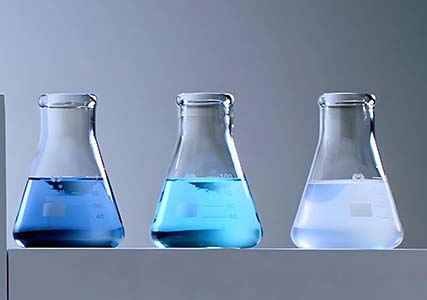Water-reducing agent is an admixture primarily used for concrete. Currently, there is a wide variety of water-reducing agents on the market, with products having different formulations. The water-reducing agents we commonly encounter are ordinary water-reducing agents and high-performance water-reducing agents. But what is a high-performance water-reducing agent? What are the advantages of high-performance water-reducing agents?

A water-reducing agent is a type of concrete admixture that can reduce the amount of mixing water while maintaining the concrete's workability, by dispersing cement particles and improving its workability, which reduces the unit water consumption and enhances the flowability of the concrete mixture; or reduces the unit cement consumption, thereby saving cement. A high-performance water-reducing agent can significantly reduce water usage while maintaining the same concrete slump, thus greatly increasing the strength of the concrete at various ages.
Concrete prepared with it has a smaller shrinkage rate, which can improve the volume stability and durability of the concrete.
Low dosage (calculated based on solid content, generally 0.15%~0.25% of the cementitious material quality), high water-reducing rate.
It has better adaptability to cement.
The concrete mixture has good workability and workability retention.
It does not pollute the environment during production and use, making it an environmentally friendly water-reducing agent.
Low chloride and alkali content in the admixture.
It greatly improves concrete performance, significantly enhancing concrete durability, mechanical properties, and dimensional stability.
Both high-performance water-reducing agents and ordinary water-reducing agents can effectively improve the rheological properties of concrete mixtures, with similar effects. However, in other aspects, these two types of water-reducing agents differ:
The water-reducing rate of ordinary water-reducing agents typically ranges from 5%~10%, whereas high-performance water-reducing agents can achieve a water-reducing rate of 12%~25%, or even higher.
High-performance water-reducing agents can greatly improve the workability of concrete without changing the water-cement ratio. For example, adding high-performance water-reducing agents can prepare high-flowability concrete with a slump as high as 25cm, without introducing excessive air. It will not lead to an excessive setting delay in concrete; concrete with ordinary water-reducing agents usually has a slump of about 10cm under the same cement content.
With the same slump, high-performance water-reducing agents can effectively reduce the mixing water amount of concrete, significantly lowering the water-cement ratio, thereby increasing the concrete's strength. Therefore, high-performance water-reducing agents are primarily used to configure highly fluid concrete with high water-reducing requirements, while ordinary water-reducing agents, which have a lower water-reducing rate, are mainly used for preparing concrete with lower strength grades and lower water-reducing requirements.
In terms of preparation cost, polycarboxylic acid-based water-reducing agents have higher solid content and are relatively more expensive; whereas ordinary water-reducing agents have lower solid content and are more affordable.